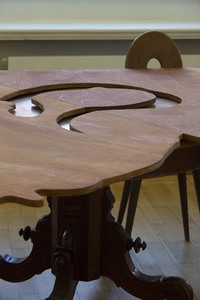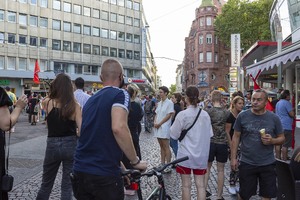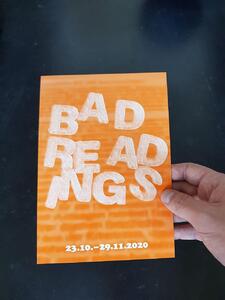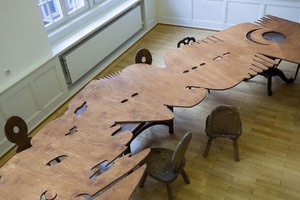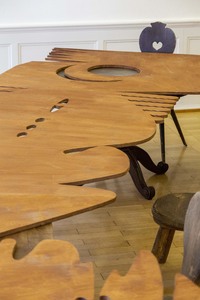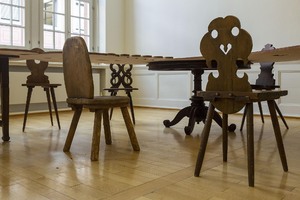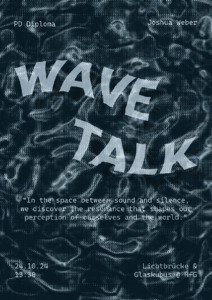"Website und Online-Angebote der HfG"
| Begriff | Website und Online-Angebote der HfG |
| Metakey | Freigabe Nutzung HfG (rights:usage_hfg) |
| Typ | Keyword |
| Vokabular | Rechte |
1767 Inhalte
- Seite 1 von 148
Bad Reading_Fokus Tisch
- Titel
- Bad Reading_Fokus Tisch
- Autor/in
- Kategorie
- Schlagworte
- Datierung
- 23.10.2020 - 29.11.2020
- Ort: Institution
- Stadt
- Land
- Beteiligte Institution(en)
- Titel
- Bad Reading_Fokus Tisch
- Titel (en)
- Bad Reading_focus table
- Urheberrechtshinweis
- © Diane Hillebrand
- Rechtsschutz/Lizenz
- Freigabe Nutzung HfG
- Beziehung/Funktion
- Semester
- Studiengang
- Typ der Abschlussarbeit
- Importiert am
- 19.06.2024
- Übergeordnete Sets
- 1
Bad Reading_Fokus Lesekreis
- Titel
- Bad Reading_Fokus Lesekreis
- Autor/in
- Kategorie
- Schlagworte
- Datierung
- 23.10.2020 - 29.11.2020
- Ort: Institution
- Stadt
- Land
- Beteiligte Institution(en)
- Titel
- Bad Reading_Fokus Lesekreis
- Titel (en)
- Bad Reading_focus reading circle
- Urheberrechtshinweis
- © Diane Hillebrand
- Rechtsschutz/Lizenz
- Freigabe Nutzung HfG
- Beziehung/Funktion
- Semester
- Studiengang
- Typ der Abschlussarbeit
- Importiert am
- 19.06.2024
- Übergeordnete Sets
- 1
HIT Einladungskarte
- Titel
- HIT Einladungskarte
- Autor/in
- Kategorie
- Schlagworte
- Datierung
- 23.10.2020 - 29.11.2020
- Ort: Institution
- Stadt
- Land
- Beteiligte Institution(en)
- Titel
- HIT Einladungskarte
- Titel (en)
- invite "Bad Readings"
- Urheberrechtshinweis
- © Diane Hillebrand
- Rechtsschutz/Lizenz
- Freigabe Nutzung HfG
- Medienersteller/in
- Beziehung/Funktion
- Medien-Beschreibung
- digitale Collage
Buchstaben 3D-gedruckt: Byron Kalomamas, Badischer Kunstverein, Karlsruhe 2020
Foto von: Bruno Jacoby
- digitale Collage
- Medien-Beschreibung (en)
- digital collage
letters 3D-printed: Byron Kalomamas, Badischer Kunstverein, Karlsruhe 2020
photo by: Bruno Jacoby
- digital collage
- Semester
- Studiengang
- Typ der Abschlussarbeit
- Importiert am
- 19.06.2024
- Übergeordnete Sets
- 1
Bad Reading_Fokus Tisch
- Titel
- Bad Reading_Fokus Tisch
- Autor/in
- Kategorie
- Schlagworte
- Datierung
- 23.10.2020 - 29.11.2020
- Ort: Institution
- Stadt
- Land
- Beteiligte Institution(en)
- Titel
- Bad Reading_Fokus Tisch
- Titel (en)
- Bad Reading_focus table
- Urheberrechtshinweis
- © Diane Hillebrand
- Rechtsschutz/Lizenz
- Freigabe Nutzung HfG
- Beziehung/Funktion
- Semester
- Studiengang
- Typ der Abschlussarbeit
- Importiert am
- 19.06.2024
- Übergeordnete Sets
- 1
Bad Reading_Fokus Tisch
- Titel
- Bad Reading_Fokus Tisch
- Autor/in
- Kategorie
- Schlagworte
- Datierung
- 23.10.2020 - 29.11.2020
- Ort: Institution
- Stadt
- Land
- Beteiligte Institution(en)
- Titel
- Bad Reading_Fokus Tisch
- Titel (en)
- Bad Reading_focus table
- Urheberrechtshinweis
- © Diane Hillebrand
- Rechtsschutz/Lizenz
- Freigabe Nutzung HfG
- Beziehung/Funktion
- Semester
- Studiengang
- Typ der Abschlussarbeit
- Importiert am
- 19.06.2024
- Übergeordnete Sets
- 1
Bad Reading_Fokus Tisch
- Titel
- Bad Reading_Fokus Tisch
- Autor/in
- Kategorie
- Schlagworte
- Datierung
- 23.10.2020 - 29.11.2020
- Ort: Institution
- Stadt
- Land
- Beteiligte Institution(en)
- Titel
- Bad Reading_Fokus Tisch
- Titel (en)
- Bad Reading_focus table
- Urheberrechtshinweis
- © Diane Hillebrand
- Rechtsschutz/Lizenz
- Freigabe Nutzung HfG
- Beziehung/Funktion
- Semester
- Studiengang
- Typ der Abschlussarbeit
- Importiert am
- 19.06.2024
- Übergeordnete Sets
- 1
Bad Reading_Fokus Tisch
- Titel
- Bad Reading_Fokus Tisch
- Autor/in
- Kategorie
- Schlagworte
- Datierung
- 23.10.2020 - 29.11.2020
- Ort: Institution
- Stadt
- Land
- Beteiligte Institution(en)
- Titel
- Bad Reading_Fokus Tisch
- Titel (en)
- Bad Reading_focus table
- Urheberrechtshinweis
- © Diane Hillebrand
- Rechtsschutz/Lizenz
- Freigabe Nutzung HfG
- Beziehung/Funktion
- Semester
- Studiengang
- Typ der Abschlussarbeit
- Importiert am
- 19.06.2024
- Übergeordnete Sets
- 1
Bad Reading_Fokus Tisch
- Titel
- Bad Reading_Fokus Tisch
- Autor/in
- Kategorie
- Schlagworte
- Datierung
- 23.10.2020 - 29.11.2020
- Ort: Institution
- Stadt
- Land
- Beteiligte Institution(en)
- Titel
- Bad Reading_Fokus Tisch
- Titel (en)
- Bad Reading_focus table
- Urheberrechtshinweis
- © Diane Hillebrand
- Rechtsschutz/Lizenz
- Freigabe Nutzung HfG
- Beziehung/Funktion
- Semester
- Studiengang
- Typ der Abschlussarbeit
- Importiert am
- 19.06.2024
- Übergeordnete Sets
- 1
Bilder Prozess
- Titel
- Bilder Prozess
- Autor/in
- Schlagworte
- Datierung
- 24.10.2024
- Titel
- Bilder Prozess
- Titel (en)
- Images Process
- Urheberrechtshinweis
- © Joshua Weber
- Rechtsschutz/Lizenz
- Freigabe Nutzung HfG
- Medienersteller/in
- Beziehung/Funktion
- Medien-Beschreibung
- Bilder der Experimente und der Herstellung der Objekte
- Medien-Beschreibung (en)
- Pictures of the experiments and the production of the objects
- Alternativ-Text (de)
- Bilder der Experimente und der Herstellung der Objekte
- Alternativ-Text (en)
- Pictures of the experiments and the production of the objects
- Projektleiter/in
- Semester
- Studiengang
- Typ der Abschlussarbeit
- Importiert am
- 03.11.2024
- Übergeordnete Sets
- 1
Plakat
- Titel
- Plakat
- Autor/in
- Kategorie
- Schlagworte
- Datierung
- 24.10.2024
- Titel
- Plakat
- Titel (en)
- Poster
- Urheberrechtshinweis
- © Joshua Weber
- Rechtsschutz/Lizenz
- Freigabe Nutzung HfG
- Medienersteller/in
- Beziehung/Funktion
- Projektleiter/in
- Semester
- Studiengang
- Typ der Abschlussarbeit
- Importiert am
- 03.11.2024
- Übergeordnete Sets
- 1
Bilder Prozess
- Titel
- Bilder Prozess
- Autor/in
- Schlagworte
- Datierung
- 24.10.2024
- Titel
- Bilder Prozess
- Titel (en)
- Images Process
- Urheberrechtshinweis
- © Joshua Weber
- Rechtsschutz/Lizenz
- Freigabe Nutzung HfG
- Medienersteller/in
- Beziehung/Funktion
- Medien-Beschreibung
- Bilder der Experimente und der Herstellung der Objekte
- Medien-Beschreibung (en)
- Pictures of the experiments and the production of the objects
- Alternativ-Text (de)
- Bilder der Experimente und der Herstellung der Objekte
- Alternativ-Text (en)
- Pictures of the experiments and the production of the objects
- Projektleiter/in
- Semester
- Studiengang
- Typ der Abschlussarbeit
- Importiert am
- 03.11.2024
- Übergeordnete Sets
- 1
Bilder Ausstellung
- Titel
- Bilder Ausstellung
- Autor/in
- Kategorie
- Schlagworte
- Datierung
- 24.10.2024
- Titel
- Bilder Ausstellung
- Titel (en)
- Images exhibition
- Urheberrechtshinweis
- © Joshua Weber
- Rechtsschutz/Lizenz
- Freigabe Nutzung HfG
- Medienersteller/in
- Beziehung/Funktion
- Medien-Beschreibung
- Die Objekte der Ausstellung und ihr Erlebnis
- Medien-Beschreibung (en)
- The objects of the exhibition and the experience
- Projektleiter/in
- Semester
- Studiengang
- Typ der Abschlussarbeit
- Importiert am
- 03.11.2024
- Übergeordnete Sets
- 1
